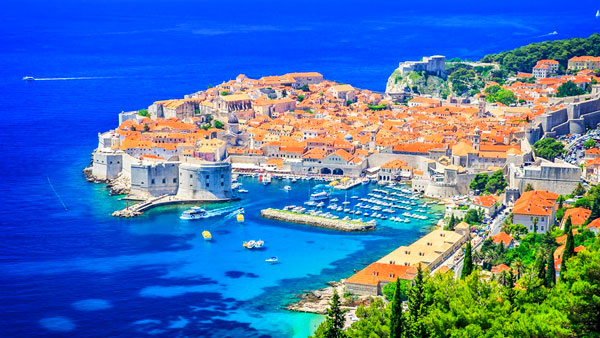Croatia: A fresh travel palette
By Joe Gschwendtner; courtesy photo
Croatia is a huge surprise for the North American. Not completely “discovered” even by discriminating Europeans, there is so very much to be swilled – no matter one’s perspective. From medieval to avant-garde, there is a great bouquet in this misshapen land. With first-class autobahns as spines, one might race to Dubrovnik, a prominent tourist destination, bypassing much Croatian rapture without a detailed plan. That would be a mistake.
The biggest surprise is the Istrian peninsula, especially its west coast. If the Roman Empire and ruins are your thing, this outdoor museum of antiquity will delight. The towns of Porec, Rovinj and Pula are standouts, each with its own personality. Rovinj is chock-full of artists and their studios. Dominated by St. Euphemia Church’s 58-meter tower, the old Venetian town has preserved its quaintness as an old fishing village with cobblestoned streets.
Pula has its amphitheatre (coliseum) as the dominant draw. Sixth largest surviving ruin of its kind in the world, it once seated 22,000 spectators. Visit the cavernous innards where Christians and animals were caged before the bloody spectacle that would follow. The Forum, further south, includes the Temple of Augustus and museums, both archaeological and modern.
Within the Kvarner Gulf and west of Rijeka, Croatia’s largest port, is Opatija and Lovran. This 20 km stretch of coast was once the resort area for the Habsburg Dynasty rulers and a most scenic drive – well worth your time.
Croatia’s stunning natural beauty unfurls along her Adriatic seascapes. Be aware, as entrancing as the sea is, sandy beaches are rare and rocky coasts the rule. If swimming is sacred to you, bring reef walkers or clogs. Small tucked away coves beckon your picnic, or at least a photo.
There is an abundance of islands offshore; many well worth the visit. Otok Pag provides the full flavor of an ancient Adriatic economy, crisply barren and dominated by olive groves, sage and sheep farmers. The pastoral way of life is alive and well here, including lace-making and artisanal cheese; it takes one into the past. Most tourists prefer the larger, more popular Hvar Island.
Zadar, at Croatia’s midpoint, is the capital of Dalmatia. Brutalized by World War II bombing, it is a hodgepodge of attractions. The compact old city sits on a peninsula that is mixed with ruins and new architectural creations. Among the latter are the Sea Organ, an experimental musical instrument that plays music by way of sea waves and tubes located underneath a set of large marble steps, and Greeting to the Sun, an installation made out of 300 photo-sensitive glass plates that absorb daylight and transform into a wondrous light show – both by Nikola Basic.
Once called Ragusa, the highlight of anyone’s visit is still Dubrovnik. When not overwhelmed by cruising hoards, your heart will be taken. A best friend’s daughter staged her wedding there. Talk about a venue!
Rebuilt after a 1667 earthquake, Old Town stuns. Within its massive medieval walled towers and bastions is a masterpiece; as if a painter, architect and curator collaborated perfectly. Not one color on a palette is missing – pristine.
But it is even much more. Beaches, markets, cable car museums, festivals, cuisine, ambiance and friendly people all create perfection. If you are late to the European travel scene, start in Dubrovnik. You’ll be hooked!
